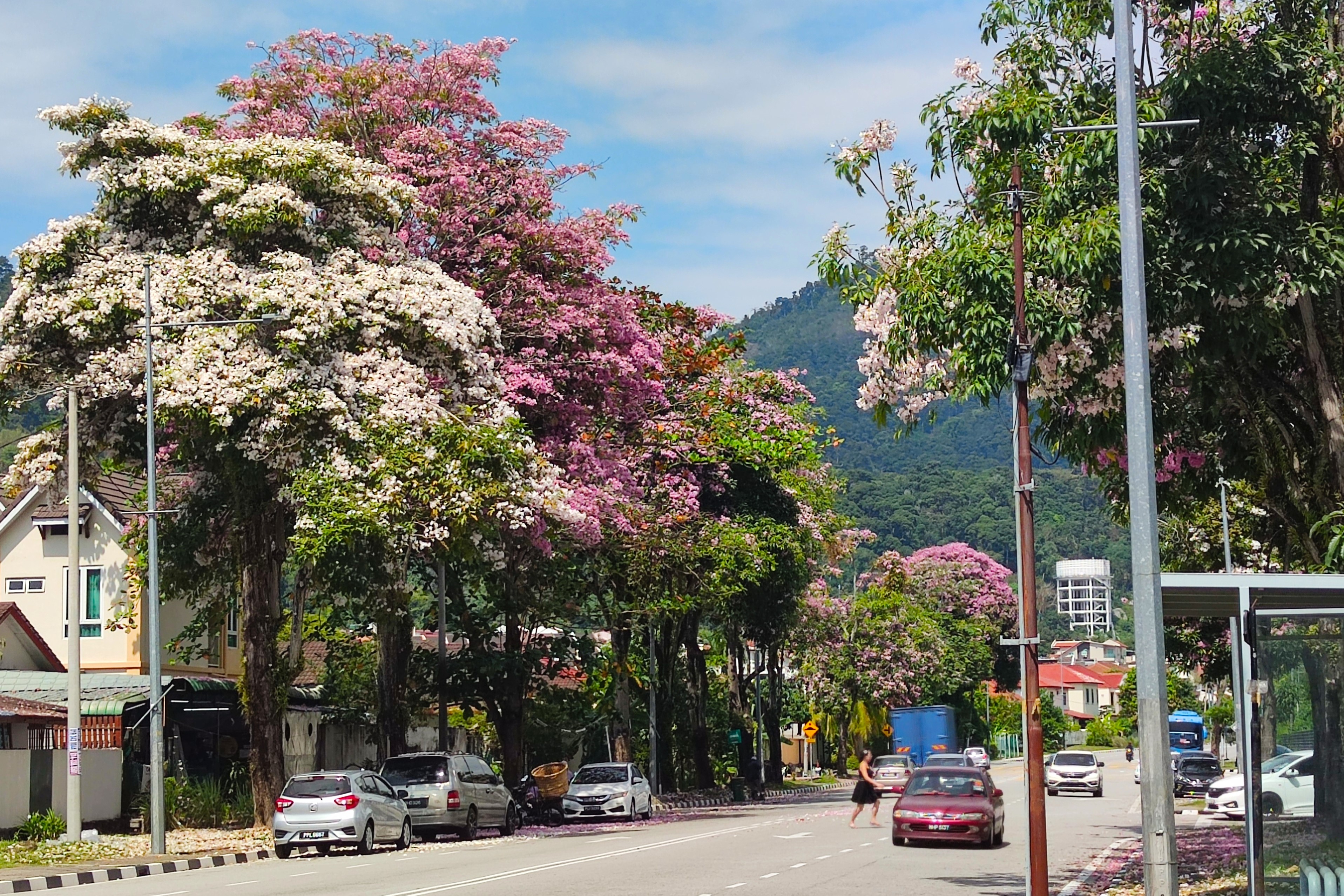Tecoma Blossoms Becoming Iconic in Penang
By Priyanka Bansal
March 2024 FEATURE
COME MARCH OR APRIL, several streets in Penang spring alive with bursts of pink and white Tecoma flowers. These are also colloquially known as the “Penang Sakura”, due to its resemblance to Japanese cherry blossoms.
First planted in Melaka and then Johor by Malaysia’s Forest Research Institute, Tecoma trees, which originated from the Caribbean and central and northern regions of South America, are fast growing and good for providing shade. Chandra Sagaran, an arborist and assistant landscape architect at MBPP, says these trees were introduced to Penang two decades ago; today, there are thousands of them on the island.
“They were first planted in the Free Industrial Zone on the island,” recollects Chandra. Immediately popular for transforming unassuming areas in Penang into corners reminiscent of Japan’s famous Yoyogi Park during cherry blossom season, Tecoma trees now also bloom in Relau, Sungai Nibong, Tanjung Tokong and the Universiti Sains Malaysia (USM) campus.
These trees take only two to three years to attain its first blooming season, which lasts a few months annually. Tecoma trees bloom whenever there is drastic temperature change. In Penang, this usually takes place around February, March or April, when the weather changes from wet and rainy to scorching hot.
These Sakura-lookalikes have also caught the attention and admiration of Japanese expats in Penang. The Pink Hibiscus Club, a group of Japanese women whose mission is to promote Japanese culture in Penang and who organises the annual Penang Yosakoi Parade, have been sponsoring the planting of Tecoma trees in Penang. 60 trees have recently been planted along Karpal Singh Drive. If they survive the salty winds of the sea, the promenade will be another photoshoot-worthy spot in the next three to four years.
Since Tecoma blooms depend on weather changes, climate change may affect their flowering patterns. Rahmad Zakaria, Associate Professor at the School of Biological Sciences at USM, says that the recent inconsistent weather has caused the trees to be less productive. “Prolonged drought may trigger late flowering, stunted growth and excessive leaf shedding, whereas continuous rain deters flower production.”
Chandra also claims that these trees can grow up to 30m and demand a lot of maintenance from the local councils—the roots and falling flowers sometimes choke the drain and litter the streets.
To alleviate this, local authorities are planting new Tecoma trees in open spaces like parks and recreational areas. When in bloom, the fallen delicate, paper-thin flowers carpet the grass in dreamy shades of pink, white and lavender.
It would not be surprising if Penangites too, adopt the Japanese custom of hanami, picnicking under the beauty of these transient flowers.
Priyanka Bansal

is an Indian expat living in Penang. Owing to her artistic bent of mind she loves writing, painting and crafting.



